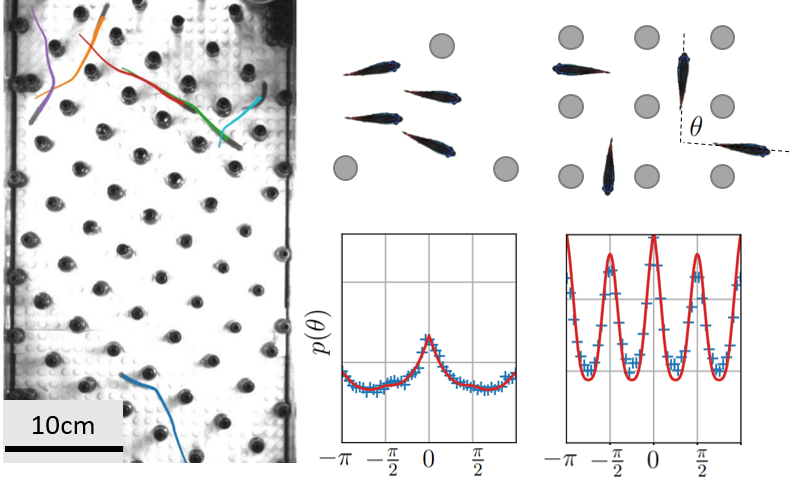- Share
- Share on Facebook
- Share on X
- Share on LinkedIn
Publication / Research
On July 18, 2024

Scientists at LIPhy have demonstrated the existence of a behavioral transition when the environment of zebrafish becomes too crowded, showing the extent to which the collective school structure resists the structural complexity of the surrounding environment.
Fish form schools in a wide variety of environments, from the open sea amid coral reefs to rocky rivers. Some natural environments are obstructed, it is therefore interesting to understand how well the collective structure of a shoal withstands the complexity of the environment. Scientists at LIPhy have demonstrated the existence of a behavioral transition when the environment of zebrafish becomes too crowded.
The study of collective movements provides a better understanding of the dynamic structures resulting from the self-organization of groups of individuals. The study of fish schools is part of this approach. The schooling of fish is remarkable because it occurs in a wide variety of environments, from the open sea to coral reefs. Previous research has focused on the study of schools in simple, unobstructed environments. In this work, a team from LIPhy used an approach combining experiment and modeling to study the impact of a complex environment on the collective organization of a school of fish. To do this, they followed the individual trajectories of a small group of zebrafish in the presence of variable obstacle densities. The structure of the school of fish proved quite resilient to the introduction of obstacles, maintaining an organization similar to that observed in the absence of obstacles. However, when the obstacles reach a critical density, the shoal structure disappears and the fish behave as if they were isolated, aligning themselves with the obstacles and no longer with their fellow fish. This density corresponds to a distance between obstacles close to the typical distance between fish in an undisturbed shoal, i.e. their natural social distance. Using a statistical model, the ingredients of this behavioral transition, from collective to independent, were analyzed in detail. The LIPhy team has shown that a complex environment can have a significant influence on the collective behavior of fish, and that social distance is critical for maintaining collective behavior in a complex environment. These results contribute to the emerging field of active and cognitive matter, and more broadly to the study of animal behavior and swarm robotics through biomimicry.
Reference : Behavioral transition of a fish school in a crowded environment, Bruno Ventéjou, Iris Magniez- -Papillon, Eric Bertin, Philippe Peyla, and Aurélie Dupont, Phys. Rev. E 109, 064403 – Published June 11, 2024, DOI: 10.1103/PhysRevE.109.064403, Open-access archives: arXiv
Videoclip: https://www.youtube.com/watch?v=8jW9zACDLj0&t=1s
CNRS communication: https://www.inp.cnrs.fr/fr/cnrsinfo/la-dissolution-dun-banc-de-poissons…
Date
Contact
Bruno Ventéjou and Aurélie Dupont
- Share
- Share on Facebook
- Share on X
- Share on LinkedIn